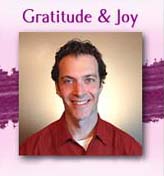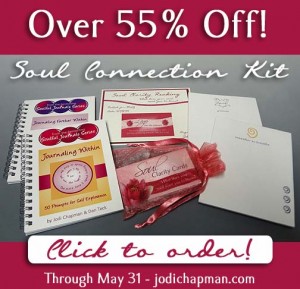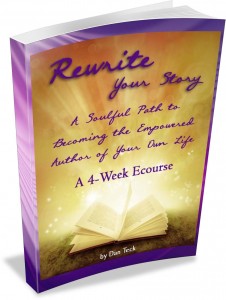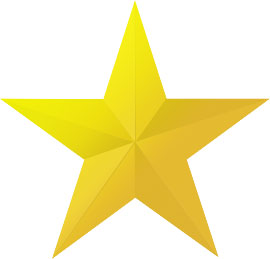 Feeding Joy (Revisited)
Feeding Joy (Revisited)
In my previous post (“Feeding Joy”), I wrote about the importance of “feeding” the parts of our lives and ourselves that we want to flourish — presumably, the parts that bring us joy, gratitude, and happiness.
But I also said that it’s natural (and probably even healthy) to express yourself, even when your thoughts and emotions aren’t joyful — rather than repressing, denying, or letting negativity fester within you.
So, is this a contradiction? By expressing negativity and giving it “air-time,” aren’t we just “feeding” it? How can we tell if we’re fanning the flames of negativity or releasing it in a healthy way?
What’s the difference between “expressing” and “feeding”?
I’ve been pondering this question a lot recently, and this is what I’ve come up with:
- Expressing is when we take something within us and let it out. It’s like opening a pressure valve, releasing potentially harmful energy. It dissipates the energy; it gets it out of us, allowing us to move on with our lives, free from its influence.
- Feeding is when we not only keep that energy trapped inside us, but we add to it by giving it our focused attention and energy. It increases rather than decreases the negativity we experience.
The direction of the energy’s movement is exactly the opposite in these two processes: Expressing negative thoughts or emotions gets them out of us — moving them out into the world where they can (hopefully) dissipate. Feeding negative thoughts puts them into us, where they can multiply and fester.
(In my previous post, I suggested a “five-minute rule” — allowing yourself approximately five minutes to express/release any negative thoughts or emotions. This can also be a good test to help distinguish expressing from feeding: If you’re done with the process in less than five minutes, you’ve probably simply expressed the negativity. If you’re still dwelling on it long after that, you’ve probably fed it.)
In short: Expressing makes us feel better, while feeding makes us feel worse.
And ultimately, that’s the real test: how do you FEEL after an expression (or feeding) session? Do you feel lighter, freer, unburdened, relieved, and open to joy? Or do you feel even more embroiled in anger or negativity than you did before you started expressing/feeding it? Do you feel ready to move on with your life in a positive way, or do you feel even more tethered and trapped by the negative experience?
Short-Term Vent vs. Long-Term Solution
It’s helpful to ask yourself the questions above not only moments after expressing negativity, but also in the hours, days, and weeks to come. Sometimes you might feel better and lighter immediately afterward, only to have the negative feelings re-enter your life after the initial cathartic rush has worn off. If this is the case, you may have merely vented your feelings without actually dealing with them.
Yes, venting can provide a short-term release and a temporary respite from negativity, but it doesn’t deal with the negativity’s underyling causes. And even if you feel lighter after venting, you may have simply dumped your negative feelings onto someone else!
But what’s the alternative?
Are we supposed to ignore or repress our negative emotions? Or do we have to spend months or even years focusing on them, trying to get to their root and “fix” them?
I believe that there’s a middle ground, which can be summarized in a single sentence (that Jodi and I put on the cover of the “Vent Books” we used to make): Let it out, and let it go.
Here are a few steps that might help with this process:
- Acknowledge – Notice your thoughts and emotions without judgment. It’s perfectly natural to have a full spectrum of experiences, including positive, negative, and everything in between. Becoming aware of negativity doesn’t mean that there’s something wrong with you; it simply means that you’re living consciously — and that you’re a human being!
- Express – Although you don’t have to rant and rave about every minor blip on your emotional radar, it can be helpful to address the larger or more long-lasting troubling thoughts, emotions, and experiences — perhaps by journaling about them, discussing them with a counselor or friend, or even just “talking” them through with yourself. (Again, however, I recommend that you don’t dwell on the negativity for much longer than five minutes, or chances are you’ll end up feeding it.)
- Redirect – Shift your focus to something positive — something that you’re grateful for, something that brings you joy, something that’s worthy of your attention!
This last step is the most empowering part of the process, because while we can’t necessarily control every thought and emotion that passes through our consciousness, we CAN choose what we pay attention to. And we always have millions of options in this regard, so why not choose something that reflects and nourishes your highest self?
In other words (to return to our starting point): something that feeds your joy!
…
P.S. If you’d like to feed the gratitude and joy in your life — and connect with others who are doing the same — I hope you’ll join me in the “Gratitude and Joy” group of the Soulful Life Sanctuary! Registration just opened, and right now you can sign up at a $100 earlybird discount!
The sanctuary (created by my wonderful wife, Jodi Chapman) is a beautiful online community that helps you reconnect with your soul while connecting with like-minded friends. It’s also an all-encompassing collection of tools and resources to help you live your most soulful life — including ecourses, live and archived classes, plus Sacred Spaces and Soul Guides in more than a dozen areas, such as Wellness, Creativity, Spirituality, Soulful Parenting, Self-Care, and Gratitude and Joy (which I’m the Soul Guide for).
I’d love to connect with you in this Sacred Space and continue this joyous journey together! 🙂
Please click here to learn more about the Soulful Life Sanctuary.

P.P.S. Affiliate program available! You can also earn money (50% commission on each referral) while helping us spread the word about this beautiful community!







 For the last 25 years, I’ve been leading a double life.
For the last 25 years, I’ve been leading a double life.


